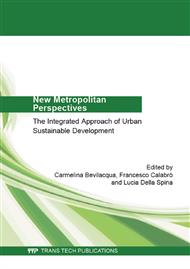p.433
p.443
p.447
p.452
p.458
p.464
p.470
p.476
p.483
M.C. Escher and the Calabrian Cultural Landscape of Linguistic Greek Minorities
Abstract:
The Calabrian Region, in the past centuries, has been a refuge land for groups of different culture and religion from various Mediterranean areas. Today in this area it is still possible to identify three major ethnic language minorities related to historical events dating back to times past: the Greek of Calabria minority in the province of Reggio Calabria, the Waldensians one in the province of Cosenza and the Arbëreshë culture in the province of Cosenza, Crotone and Catanzaro. The existence in the same region of three "historical linguistic minorities", protected by the Law no. 482/1999, is unique in the Italian panorama: this territory is characterized by an ancient culture, an historic and architectonic heritage, and it is also inserted in an environment of great natural value, such as to create the conditions for the attempts to inclusion of this areas in the UNESCO heritage sites within the "Cultural Landscape" category. These territories are formed hierarchically by different ecosystems, deeply influenced by various factors such as the geological composition of the soil, the microclimate, the presence of the fiumare (characteristic Calabrian rivers), the geographical setting difficulties for agriculture and the use of terracing techniques to overcome the lack of large flat areas. The different combinations of these micro-ecosystems creates a complex landscape that can be observed at different scales and is determined by the human management of the various natural resources. No wonder that this landscape inspired Maurits Cornelis Escher to spend many months in this region, drawing and sketching.
Info:
Periodical:
Pages:
458-463
Citation:
Online since:
June 2014
Authors:
Permissions:
Share:
Citation:


